When to Begin your Digital Transformation Journey
By Beverly D. Rider, Chief Commercial Officer, Hitachi Global Digital Holdings, Global Social Innovation Business
5G technology is a hot topic these days for the telecom sector and for enterprises across industries. With the promise of extreme bandwidth, ultra-low latency, and high levels of security and reliability, 5G holds the promise to transform industries in ways we’re just beginning to understand.
Recently Hitachi had the opportunity to meet with dozens of these industry decision makers. These conversations reflected a hesitancy and misunderstanding of 5G and the impact it will have on their business and when. Some comments included:
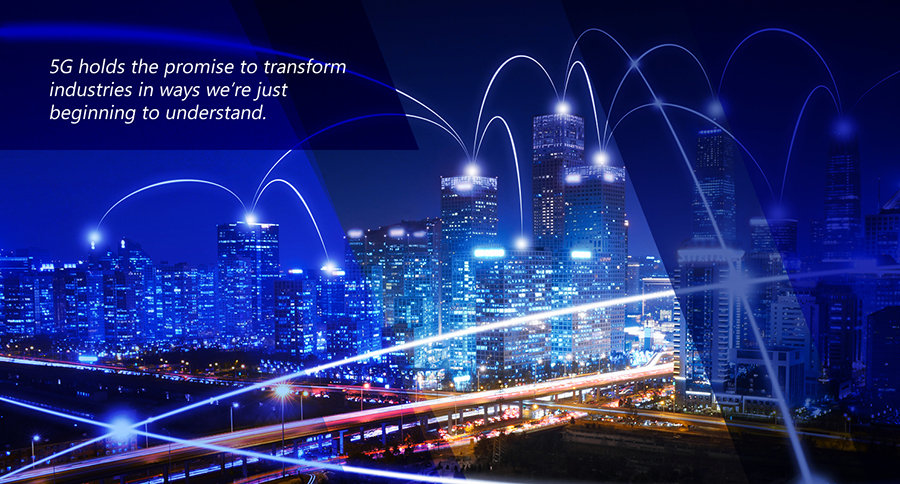
From a Hitachi perspective, we believe that while 5G architecture will change the world, the technology and applications are in their early stages. You shouldn’t wait to start your digital journey.
We’ve all waited for that next model year, the latest iPhone or the state-of-the-art laptop. We’re afraid we’ll invest in “old” technology when we buy now. But, 4G has a lot of runway left. Telecom operators around the world continue to invest in 4G (sometimes called LTE) networks; 5G Americas’ reports an increase of a quarter billion new LTE connections coming in the 2nd quarter 2019, peaking at six billion LTE connections globally in 2022.
Operators are improving the performance of their 4G networks with Massive MIMO, carrier aggregation, and QAM 256. These capabilities increase the total bandwidth available with 4G LTE. Operators are now offering 4G LTE services that can exceed 1 Gbps in total bandwidth. This is Gigabit class LTE. 4G cellular bandwidth available today is ample for you to continue on your digital evolution path.
Another important consideration to adopting 4G now is that coverage is already ubiquitous, with excellent in-building penetration for digital and mobile applications. Additionally, new 4G LTE capabilities have been deployed to optimize IoT services. These include extending battery life for sensors for up to 10 years and adding voice capabilities on IoT devices.
As to the question of future proofing, 4G has this covered. Commercial and industrial devices are plentiful, and 5G devices will be backwards compatible to work on 4G networks. Your investments today will integrate with the 5G solutions of tomorrow.
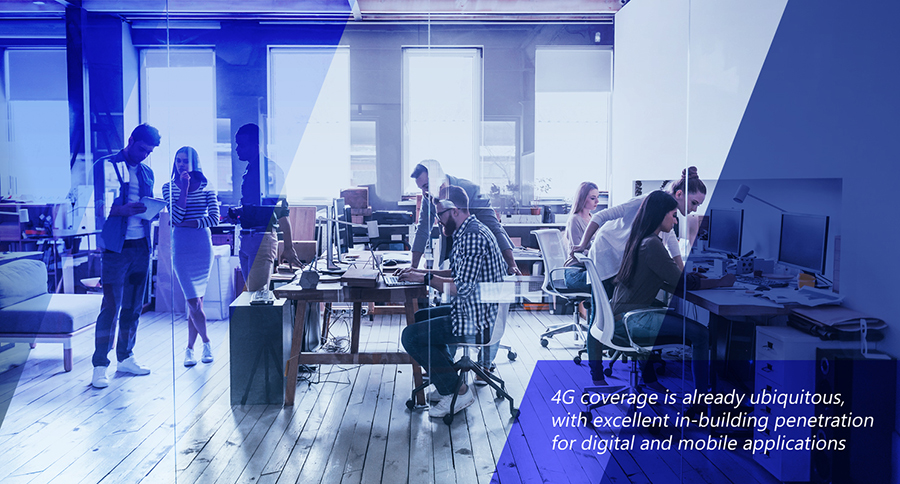
Sprint recently partnered with Ericsson and Hitachi to launch a 4G-based video service called Curiosity Smart Video Analytics. This is a next-gen service that connects high-definition cameras over the Sprint wireless network while applying artificial intelligence (AI) and IoT analytics to enable proactive security and smart decisions. Because this platform uses 4G technology, you can deploy the solution today and reap the benefits of reengineered processes using the real-time analytics that it provides.
Other enterprise and commercial customers have been using Hitachi’s Lumada Video Insights for over a decade to transform business processes and operations. Our platform has evolved through all the G’s – from 2G to 3G to 4G – and now we are preparing for 5G. We’ve successfully navigated these changes by continuing to co-create solutions with our customers and evolving their solutions from G to G. One game changer for this service was the introduction of 3D Lidar technology which increases the type and quality of the outputs, allowing for cross-industry deployment of a multitude of digital solutions including reducing errors and defects in manufacturing, improving safety in our food supply chain, monitoring oil and gas pipelines for fissures and breaks, and efficiently tracking carry-on luggage for airlines.
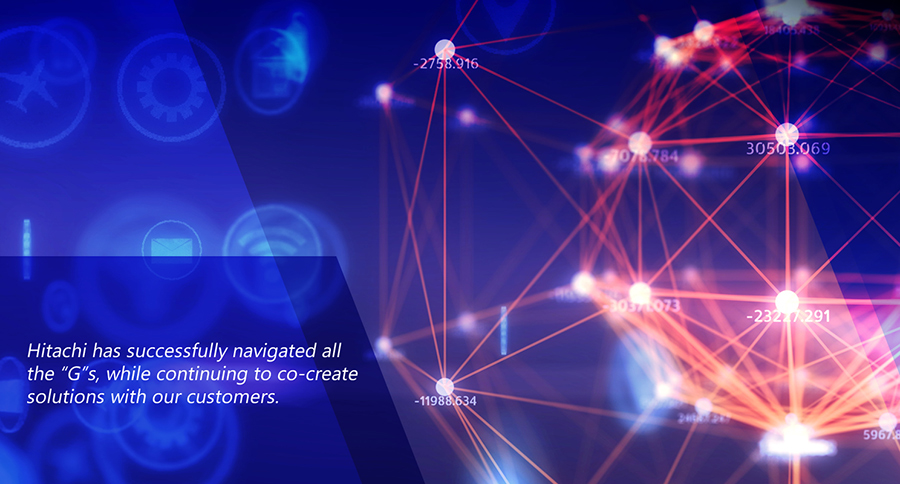
Businesses are achieving positive business outcomes using 4G today to stay competitive, agile, and to increase their financial, social, and environmental contributions – the triple bottom line.
Technologies for efficiently moving people and vehicles around cities and highways are getting better and smarter all the time. Sensors built into roadway material can monitor conditions and stress levels to determine when and where repairs are needed. Municipalities can predict potholes before they happen, allowing quick and efficient patching with the optimal mix of pavement material, minimizing vehicle damage and avoiding bigger, costlier road repairs. Strategically placed cameras provide insights into traffic flow, and by using data analytics platforms, we can redirect vehicle and pedestrian traffic for better efficiency and safety. Data-driven AI can identify suspicious activity including items left unattended and alert authorities to investigate and secure an area under threat.
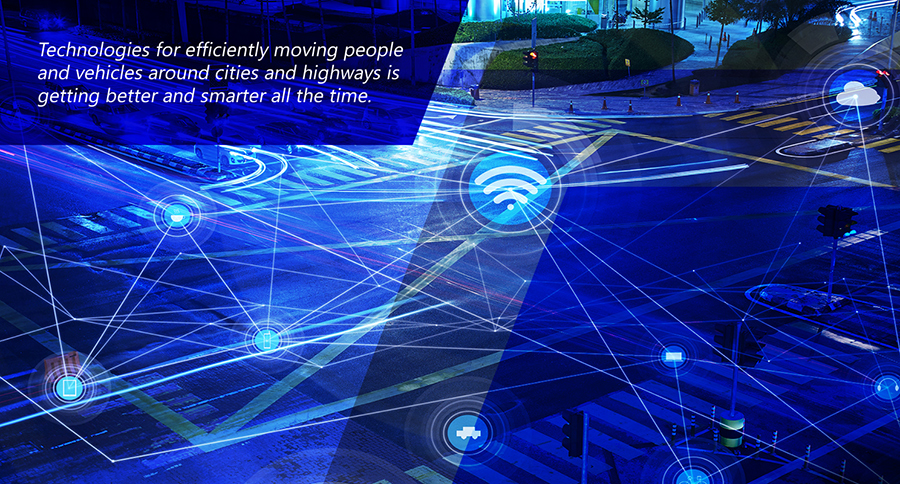
All these use cases are being deployed at this time, using today’s wireless technologies, blending both static and mobile assets in variety of stable and volatile environments.
4G is shaping digital transformation in smart manufacturing, otherwise referred to as Industry 4.0 - or the 4th Industrial Revolution (4IR).
Digital Innovation, analytics and data science, enabled by digitization of the factory floor and smart manufacturing processes, will bring significant gains in operational efficiency, automation, quality, and safety. This transformation is led by getting data from the machines, providing the material needed to build efficiencies across the manufacturing and human processes. To truly achieve digital transformation at scale, additional machines may need to be connected, additional sensors placed, and the right data extracted and managed to provide actionable insights.
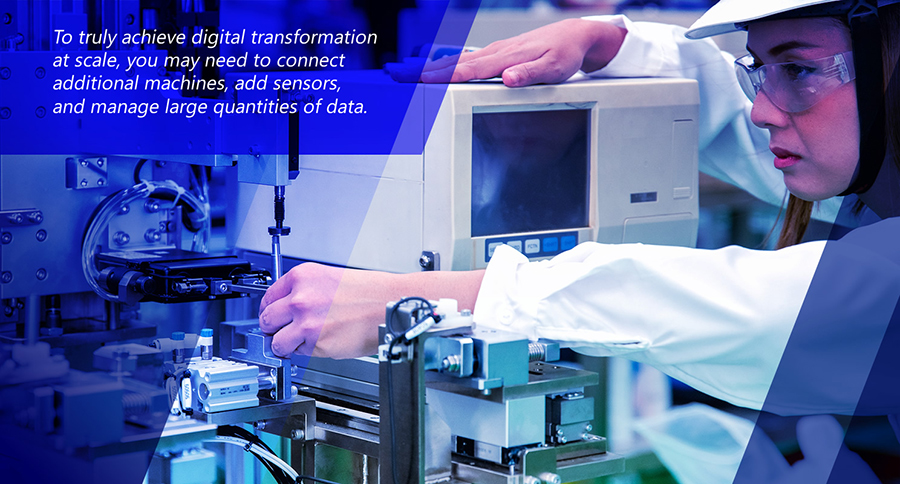
A digital innovation foundation for Industry 4.0 can be built today using 4G technology. Read how Hitachi and Ericsson are partnering to bring Industry IoT to the production floor with 4G LTE.
Airports operate like a miniature city and with competing stakeholders and clients - spanning airport management, facilities management, airlines clients, retail, air traffic control, safety and security, and, of course travelers. There are tremendous opportunities to streamline and optimize airline and airport operations using cellular technology. With airlines and airports, we have identified challenges which can be addressed through real-time inventory management for retailers and restaurants, monitoring traveler movement, managing air traffic, introducing interactive robots, and by introducing predictive analytics to improve operations, increase revenue, and reduce the risk, stress, and tension inherent in today’s air travel environment.
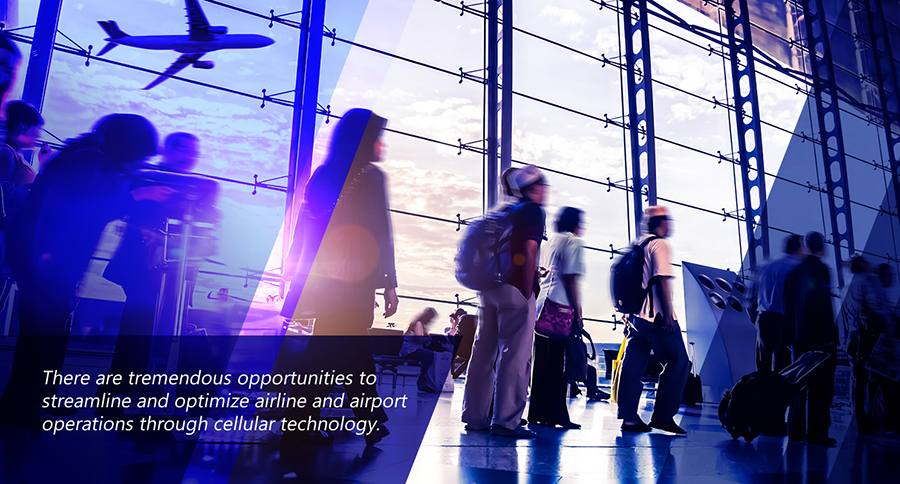
Air France has deployed a 4G-based private LTE network in their primary hubs in France. 4G LTE connectivity is more secure, has better coverage, better performance, lower latency, and is more reliable than Wi-Fi. Air France is using 4G not only to benefit from the applications and devices available today, but also to prove the value of further digitization with increased bandwidth and lower latency in the future afforded by 5G.
While 4G is available and fully ready for adoption now, 5G technology allows for scale and will make your continued digital transformation deployment even better. All the Tier One carriers have different strategies and timelines for their 5G deployments. With nearly weekly announcements, operators around the globe are full steam ahead on 5G launches. Ericsson predicts that there will be 1.9 billion 5G subscriptions by 2024 with 5G coverage, reaching 45 percent of the global population during that timeframe.
As a mobile technology, 5G is both an evolution and a revolution. As an evolution, 5G uses radio spectrum – or the radio waves used to transmit bits of data - more efficiently, resulting in higher network speeds when compared to 4G in the same spectrum. 5G also has advanced security features built into the architecture and supports greater connection density, which is especially important for certain IoT services.
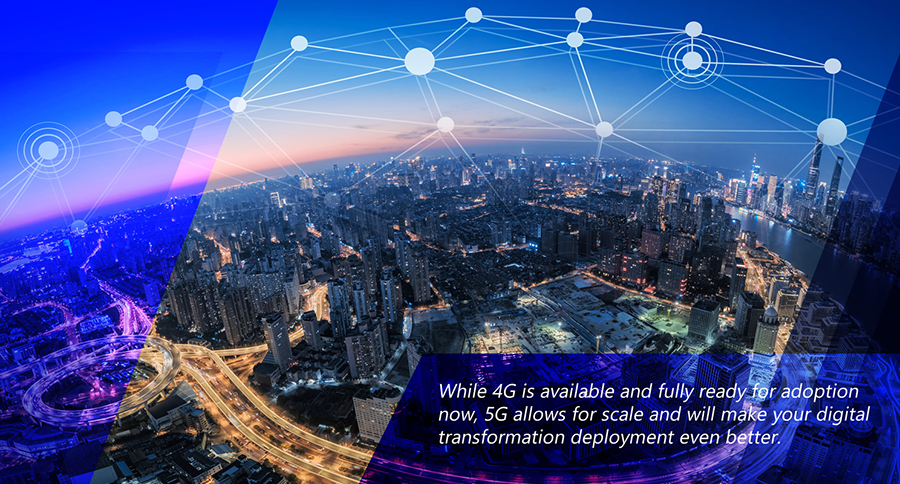
As a revolution, 5G operates in a new spectrum not previously used for mobile services called millimeter wave. The quantity of spectrum available for 5G services is orders of magnitude more than the amount used for previous generations. Where operators’ 4G services max out at approximately 1 Gbps, 5G provides peak bandwidth upwards of 10 Gbps shared across users.
5G latency is far less than the typical 4G network. The wireless trade organization, CTIA, explains latency this way: on a 4G network, if you send a message to a car to stop, the car gets the message and applies the brakes in about 5 feet. In a 5G network, it will apply the brakes in about an inch. This has massive implications for real-time control applications like vehicle-to-vehicle and vehicle-to-cloud communication, high-speed robotics, and controlling machinery remotely.
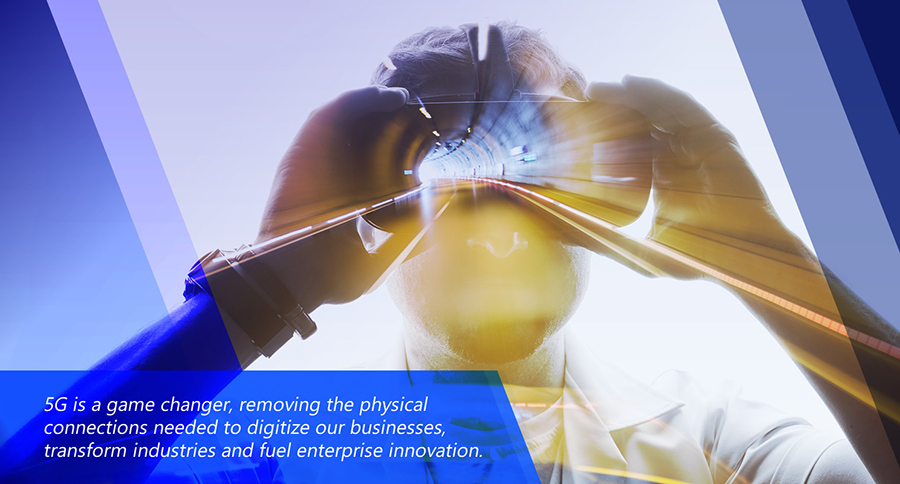
5G is a game changer, removing the physical connections needed to digitize our businesses, create immersive entertainment experiences, automate transportation systems, streamline safer food systems, and revolutionize the way we relate to each other.
Many areas of your business will benefit today from digitization and utilization of 4G IoT solutions. These solutions and infrastructure investments position you well to leverage and optimize your operations with the innovative capabilities that 5G infrastructure will offer.
Co-creation is the cornerstone of what we do with our customers and partners. Hitachi believes in the power of the ecosystem and surrounds itself with the most creative thinkers and change agents who will help you build and execute your plan to drive your triple bottom line while Powering Good and delivering social, economic and environmental value.

Chief Commercial Officer, Hitachi Global Digital Holdings, Global Social Innovation Business
Beverly Rider joined Hitachi in 2017 in an effort to broaden her work in Industrial IoT & Smart Cities. She is currently Senior Vice President and Chief Commercial Officer within Hitachi Global Digital Holdings. Prior to her tenure with Hitachi, Beverly held positions as CCO of GE, VP & Head of IoT at Ericsson and CEO of C-level Consulting (a firm specializing in IoT and M2M solutions For Smart Cities and Smart Campuses). Beverly is passionate about enabling Cities, Citizens, Corporations, and the Environment to utilize technology for long term sustainable growth, efficiencies, productivity and resilience.